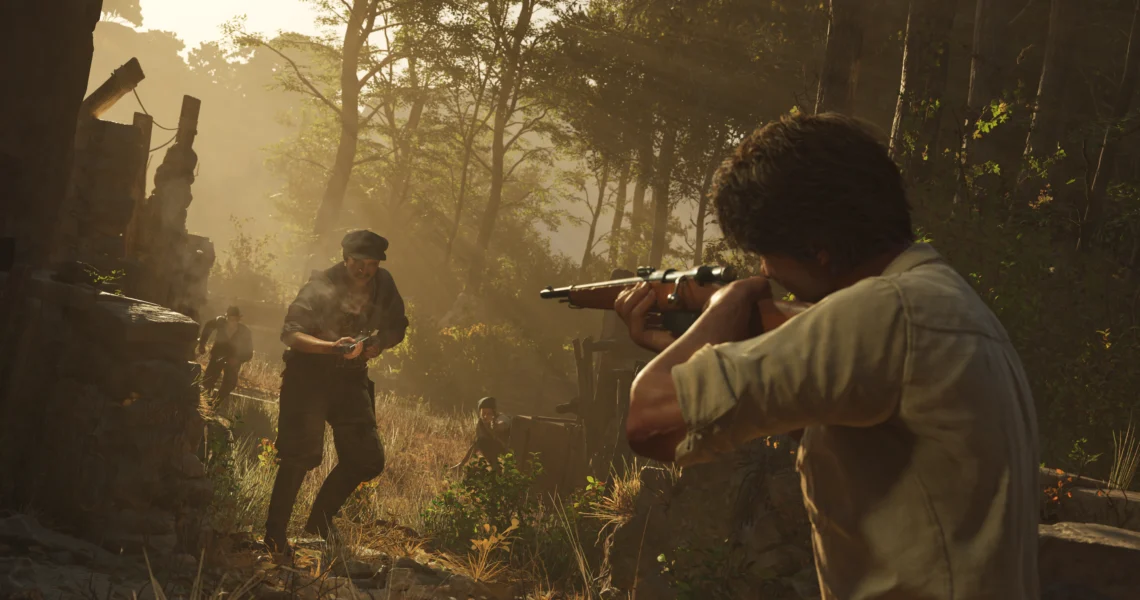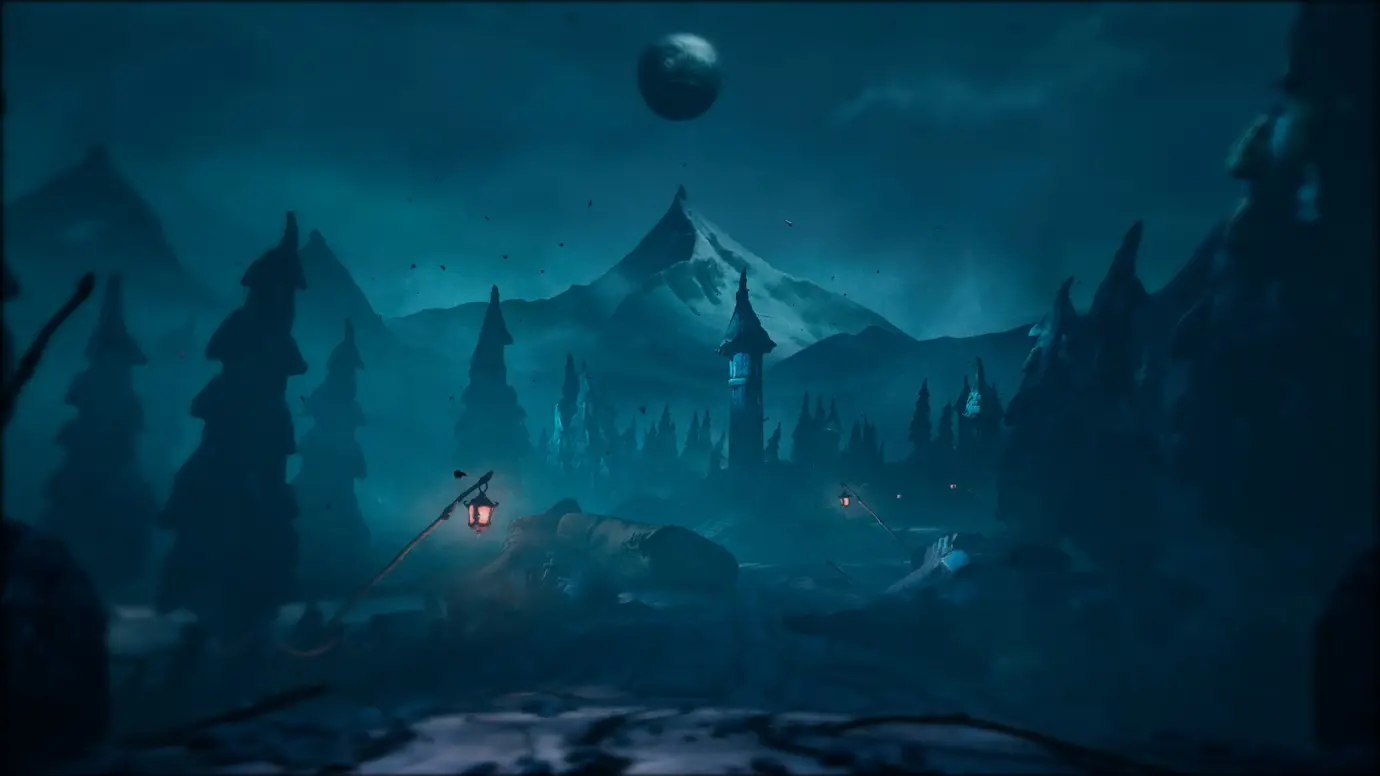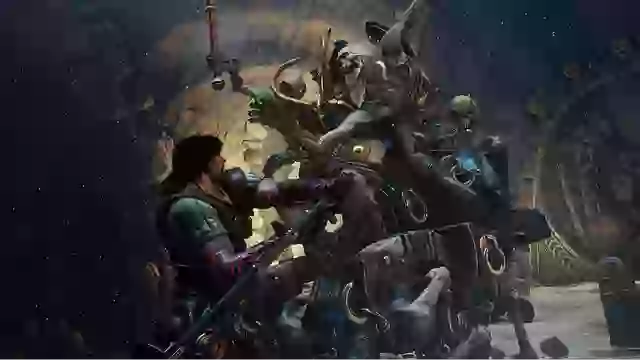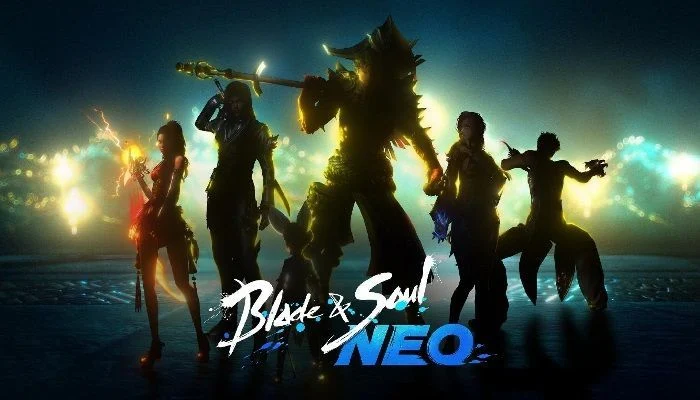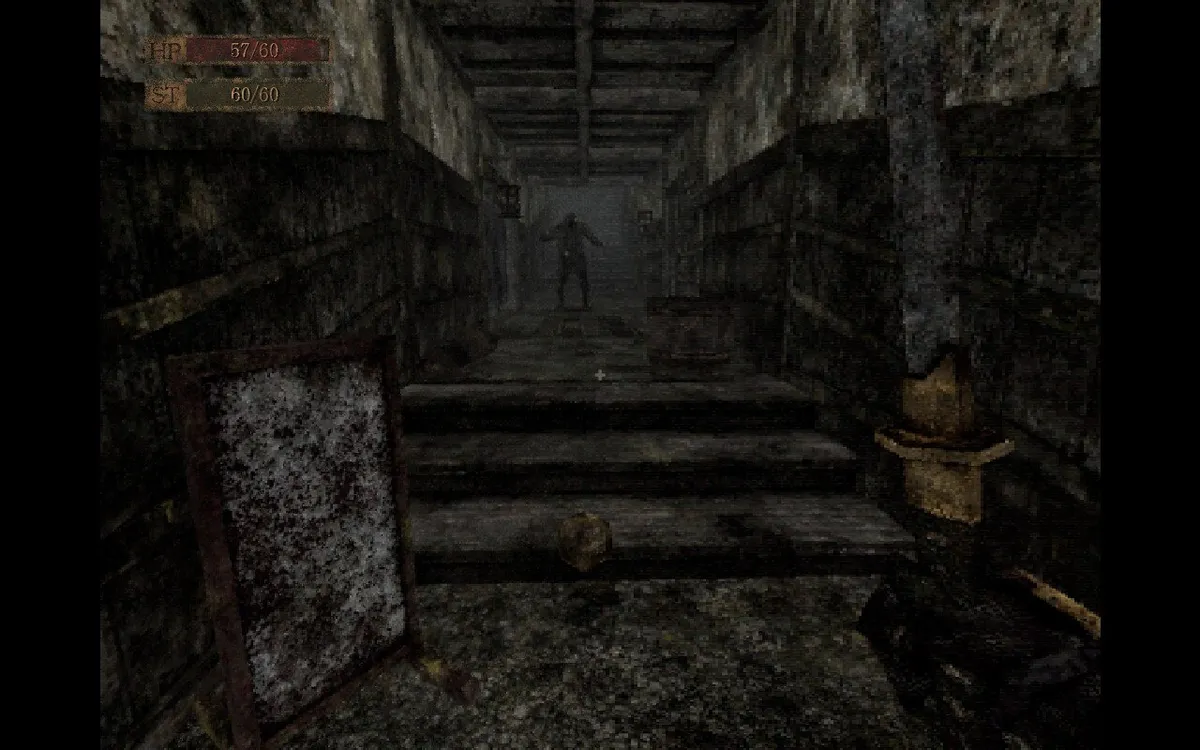Mafia: The Old Country – A Return to Roots in Sicily
The highly anticipated next chapter in the acclaimed “Mafia” series, titled Mafia: The Old Country, is poised to transport players to a fascinating and brutal historical setting.
This upcoming title serves as a direct prequel, meticulously winding the clock back not only chronologically to the early 1900s in the heart of Sicily but also fundamentally in terms of its core gameplay structure. This strategic shift represents a deliberate and welcome return to the franchise’s celebrated roots. Prior to a recent exclusive hands-on session, where approximately three hours of the game were explored, Hangar 13 president Nick Baynes articulated a clear vision for this prequel.
He repeatedly emphasized his development team’s fervent desire for players to “finish this prequel’s story.” This seemingly simple goal carries profound implications for the game’s design philosophy, signaling a strong emphasis on narrative progression over open-world distractions.
The previous mainline installment, Mafia III, while undoubtedly a very good game with its own merits, embraced a full open-world design. In hindsight, both the developers at Hangar 13 and a significant portion of the player community seemed to concur: the expansive open-world structure, with its myriad side quests and activities, ultimately didn’t fit the distinctive narrative focus of the Mafia series as well as intended. The essence of the first two Mafia games lay in their gorgeous, narrative-driven, and largely linear experiences. These titles were set against the backdrop of stunningly detailed worlds that, while explorable, primarily served as beautiful, immersive backdrops for the compelling main missions.
They avoided the temptation of overwhelming players with a deluge of menial tasks or repetitive side quests, instead channeling all resources into crafting a tightly woven, cinematic story. In fact, Baynes strongly suggested that the overwhelmingly positive reception to 2020’s remake of the original game, Mafia: Definitive Edition, served as a powerful source of inspiration and a guiding “north star” for the development of this fourth main entry in the series. That remake proved the enduring appeal of Mafia’s classic, story-first approach, paving the way for The Old Country to embrace a similar design philosophy.
A Pleasing Return to Gameplay Roots: Story First
After immersing myself in Chapters 3, 4, and 5 of Mafia: The Old Country, spanning approximately three hours of gameplay, I am pleased to report that the development team at Hangar 13 has seemingly succeeded admirably in its mission. They have effectively guided the Mafia series back to its cherished gameplay roots. This new installment is, unmistakably, a story-first, action-adventure game that deliberately steps away from the traditional open-world paradigm. Much like its beloved predecessors, Mafia and Mafia II, the narrative is the driving force, with exploration serving to enhance the immersion rather than to distract from the core plot.
An intriguing aspect of The Old Country’s gameplay immediately becomes apparent: your primary, upgradeable weapon is not a gun, but rather your knife. While firearms are certainly present and crucial to the experience, the emphasis on bladed combat signals a more personal, visceral, and perhaps more authentic representation of early 1900s Sicilian conflict. This focus naturally lends itself to a robust stealth system, which is fully supported within the game.
Even better news for players is the announced launch price point. Mafia: The Old Country is set to retail at $50, a decision that could be seen as a refreshing change in an era of escalating game prices. This value proposition, affectionately dubbed the “Reverse Randy Pitchford price tag” (a nod to industry pricing trends), makes the game highly accessible and further underscores Hangar 13’s commitment to prioritizing player experience and accessibility.
Experiencing Early 1900s Sicily: Enzo Favara’s Awakening
My hands-on experience began with a high-end PC setup, providing a glimpse into the exquisite visual fidelity of the game. The setting immediately immerses players in the early 1900s, introducing a pivotal character: Enzo Favara. Enzo is portrayed as a late-teenager who has recently escaped the brutal confines of the sulfur mines, where he endured a childhood of arduous labor. Now, he embarks on a journey to become his own free man, finding work in the vineyard of Don Torrisi. Don Torrisi is depicted not just as a typical mafioso, but as a figure who “protects the people and property of the region from the thieving bandits that lurk in the hills”—naturally, in exchange for regular “monthly protection payments.”
A particularly strong element of The Old Country’s narrative is its meticulous effort to depict Enzo’s complex progression. We witness his transformation from a very innocent, uninitiated young man into a “bound-by-blood, fully vetted member of the Torrisi outfit.” This arc culminates in him earning “the green light to do anything he thinks needs to be done for the good of the family.” This evolution is masterfully showcased in Chapter 3, which serves as Enzo’s first real taste of life beyond the vineyard and deeper within the Torrisi organization. He is brought along on a series of collection errands by Luca, the Don’s astute right-hand man, and Cesare, another hardened “made” member of the family.
The dynamic between Luca and Cesare is a narrative highlight. They act as the quintessential “mafioso version of an angel and devil on your shoulders.” Luca embodies a philosophy of patience and advocates for using violence only as a last resort. He represents the strategic, calculated side of the family’s operations. Conversely, Cesare is presented as a more impetuous, “shoot first and ask questions later” kind of guy, eager to resort to direct confrontation and intimidation. This dual influence provides a compelling moral compass for Enzo as he navigates his new life.
During our first collection stop, we visited Marco, an olive farmer. Marco, typically reliable, was late with his payment on this occasion. Luca, demonstrating his preference for restraint, handed me an unloaded gun, explicitly instructing its use “only as an intimidation tactic” to encourage Marco to pay up. However, Cesare, ever the instigator, subtly nudged me with a different perspective, suggesting, “An extra pair of hands helps jog their memory” about the late payment. As a side observation during this segment, I noted an astonishing abundance of in-game fruit—a detail that, while minor, added to the environmental richness.
Remarkably, despite the tension, no bullets were fired, nor punches thrown during this encounter. Instead, I successfully retrieved the Don’s money from Marco’s safe after locating the combination nearby. This initial mission highlighted Hangar 13’s thoughtful approach to Enzo’s journey, avoiding an immediate descent into gratuitous violence. The game carefully paces his initiation into the Torrisi crime family, ensuring he doesn’t instantly become a “murdering psychopath.” This deliberate character development choice enhances the narrative depth and emotional impact.
Escalation and Environmental Immersion: The Sicilian Countryside
The intensity gradually escalated during our second collection stop in Chapter 3. We traversed the picturesque Sicilian countryside on horseback, a mode of transport that contributes significantly to the game’s period authenticity and immersive atmosphere. Our destination was the farm of Mr. Bangalino, where his workers, led by a man named Manuele, were on strike. Luca, ever the pragmatist, directly confronted the striking men: “We can’t have strikes around here, Manuele. You and your friends need to get back to work. This is bad for business.” This interaction immediately establishes the Torrisi family’s role not just as protectors but also as enforcers of their own economic interests within the region.
The journey across the Sicilian landscape between objectives was a true highlight of the preview. The beauty of the countryside while riding to each destination on this mission was captivating. This visual splendor is largely attributable to a significant technological leap for the franchise: Mafia: The Old Country abandons the proprietary engine used in all three previous Mafia games and transitions to Unreal Engine 5 for this installment. While the previous engine was certainly no slouch (Mafia 2, in particular, was considered a strikingly good-looking game for its time), Unreal Engine 5 elevates the series’ reputation for delivering truly lovely and immersive locations.
The perfect blue skybox and realistic, pillowy clouds that gracefully adorned the sprawling, rolling green hills and farmlands did an exceptional job of establishing The Old Country’s authentic Sicilian setting. The graphical fidelity and environmental detail promise a world that is not only beautiful but also deeply evocative of its historical period. This technical upgrade is poised to enhance player immersion, making the sprawling countryside a character in itself within the narrative. I eagerly anticipate exploring more of this stunning world throughout the rest of the campaign.
As the confrontation at Mr. Bangalino’s farm unfolded, Manuele unexpectedly pulled a knife, marking the introduction of what the developers clearly consider a pivotal weapon in The Old Country. As mentioned earlier, the knife holds a central role in combat. Players will have the opportunity to unlock and earn new knives, each possessing “unique modifying properties.” These properties go beyond mere cosmetic differences, providing tangible gameplay advantages that allow players to select a specific blade tailored to their preferred combat style. The knife fighting system itself is surprisingly deep, offering a variety of offensive and defensive maneuvers.
Players can execute thrusts, slashes, parries, and dodges. The parry system is particularly reminiscent of the combat mechanics found in the critically acclaimed Batman: Arkham games, where players must strategically time their blocks or dodges. Notably, “heavy attacks” cannot be parried and instead require a precise dodge, adding a layer of strategic depth to close-quarters encounters.
Climax and Consequences: The Final Collection
The third and final collection errand in Chapter 3 escalated dramatically, leading to a pivotal moment where, as the saying goes, “the cannoli hit the fan.” Our visit to a farmer named Fichera took an unexpected turn. Instead of receiving payment, we were met with Fichera’s furious protests. His newly acquired water pump had been stolen by bandits, and he vehemently argued that the protection payments he diligently paid to Don Torrisi had failed to safeguard his valuable property.
This direct challenge to the Don’s authority, by effectively “putting their hands in the Don’s pocket” by stealing from Fichera, finally pushed the patient Luca to sanction a more aggressive response. He instructed Enzo that he now had “free reign to put live ammo in his gun and not be afraid to pull the trigger.” This marked a significant turning point in Enzo’s initiation, transitioning him from intimidation tactics to lethal force.
This directive immediately led to an intense hunt up the hillside, traversing through two separate bandit camps. The journey involved tactical engagements and a steady progression of combat. Ultimately, we “squared off with – and shot many bullets into – the dozen or so wayward thieves that stood between us and the water pump they stole.” The third-person cover-based shooting gameplay felt instantly familiar and intuitive.
It will be recognizable not only to long-time Mafia series regulars but also to anyone who has played a well-designed third-person action game over the past decade. While The Old Country isn’t necessarily breaking new ground with its gunplay mechanics, the systems are described as “comfortable, effective, and fun.” This emphasis on solid, familiar mechanics ensures that players can quickly grasp the combat without a steep learning curve, allowing the narrative to remain at the forefront.
However, the experience took a darker, “less comfortable” turn with the cutscene that followed the elimination of the last bandit. In a chilling display, Cesare proceeded to cut off one of the dead bandit’s fingers, taking his gold ring as a gruesome “bonus payment” for his troubles, before casually tossing the detached digit into a nearby well. This visceral act served as a stark reminder of the brutal realities of the mafia world Enzo is entering, contrasting sharply with Luca’s earlier calls for restraint and highlighting the harsh, unforgiving nature of the family’s justice. It firmly establishes the moral ambiguity and violence that underpin this criminal underworld.
Forbidden Love and High Stakes: Chapter 4’s Twists
With Enzo’s initial onboarding completed in Chapter 3, the next section of Mafia: The Old Country plunged into a single, massive mission in Chapter 4, laden with narrative twists and escalating stakes. This mission revolved around Isabella, Don Torrisi’s daughter, for whom Enzo clearly harbors reciprocated feelings. The plot thickens with the introduction of Gennaro, the son of Baron Fontanella. Baron Fontanella is arguably an even more influential and formidable figure within the Sicilian mafioso hierarchy than Don Torrisi himself, making Gennaro’s involvement critically important.
Gennaro, keen to impress both Isabella and flaunt his lavish new automobile, orchestrates a seemingly innocent picnic date in nearby ancient ruins. However, what begins with Enzo being tasked to “babysit” the gathering rapidly devolves into a desperate situation. The idyllic picnic quickly turns into a kidnapping scenario, leading to a thrilling car chase with Enzo in pursuit on horseback, leaving a “trail of bodies” in his wake. The mission culminates in the revelation of a stabbed double-crossing business partner, a satisfied Don Torrisi, and an Isabella who is “even-more-smitten-with-Enzo,” hinting at the burgeoning romantic subplot.
The mission began quietly, with Gennaro driving Cesare in his car to the ruins, while Isabella, perhaps strategically, insisted on riding there on horseback alongside Enzo. This detail highlighted another gameplay feature: players will be able to choose and ride their own horse in Mafia: The Old Country. Each steed is even said to possess its “own personality and characteristics.” While, based on the preview, the choice of horse didn’t seem to materially affect gameplay, it was a “welcome way to add a bit of life and meaning to the narrative,” deepening the immersion into the period.
During a pit stop en route to the ruins, the game introduced a camera feature, allowing players to “take pictures of scenic spots.” While it was the only opportunity to use it during the three-hour preview, the hope is that this feature will be available “semi-regularly over the course of the campaign,” encouraging exploration and appreciation of the game’s stunning environment. Upon rendezvousing with Cesare and Isabella, players are also introduced to The Old Country’s driving mechanics through a low-stakes race around the ruins—a potential nostalgic “nod to one of Mafia 1’s most infamous missions,” which famously featured a challenging race.
However, the tranquility was shattered. While Cesare and Enzo were occupied with Gennaro’s car during his date with Isabella, bandits (whose identity is withheld to avoid spoilers) “swooped in with guns blazing and kidnapped them both.” The kidnappers’ primary target was clearly Gennaro, and taking Isabella proved to be a severe complication for their plans, leading to unforeseen consequences. In this segment, I had the opportunity to wield a shotgun, noting that it “packed a satisfying punch,” emphasizing the game’s solid firearm combat. The situation demanded direct action:
“There was no bringing a knife (let alone stealth chokeouts) to a gunfight here; I brought Enzo in with an itchy trigger finger.” This specific scenario forced a departure from the stealth options, showcasing the game’s ability to adapt combat encounters based on narrative context.
After a tense chase, I successfully ran down the bandits’ wagon and gunned down many of the kidnapping cadre, finally rescuing Isabella. She “rewarded Enzo with a kiss (don’t tell the Don!).” While Cesare escorted Isabella safely back home, Enzo’s mission wasn’t complete. He still needed to retrieve Gennaro, as returning without either would result in dire consequences from both fathers. This critical objective led to a section that truly allowed me to “unleash my inner Sam Fisher,” setting the stage for a compelling stealth sequence. The area was “nicely set up for stealth in an open area, letting me pick my path and remain undetected.”
As a player who favors stealth, I embraced the challenge. While the developers “don’t expect most players to make it through the entire area” undetected, given its size and numerous enemies, I made a concerted effort. Though I held out for a considerable period, I was eventually spotted and had to resort to shooting, highlighting the dynamic nature of the stealth system.
Stealth Mechanics and Sacred Upgrades
When engaging in The Old Country’s stealth segments, players will find a familiar yet effective set of mechanics. The rules are akin to those found in classic stealth games like Splinter Cell. Players can crouch to minimize noise, enabling silent movement through environments. Distractions are key: players can throw coins or picked-up objects like bottles to divert the attention of enemies. For silent takedowns, Enzo has two options: a quick knife execution or a non-lethal strangle that renders enemies unconscious.
The latter initiates a button-mashing Quick Time Event (QTE), requiring players to be fast and precise to prevent the target from escaping. Furthermore, the environment offers strategic advantages, with “conveniently placed empty containers” allowing players to hide bodies and prevent discovery, maintaining the stealth integrity of the area. While The Old Country may not introduce groundbreaking stealth mechanics, the preview confirms that it executes familiar stealth gameplay “reasonably well,” providing a satisfying experience for fans of the genre.
An interesting and thematic layer to the gameplay is the upgradeable bead slots on Enzo’s rosary. These beads are not merely cosmetic; they directly “affect gameplay,” offering tangible advantages. For instance, one specific upgrade can “dampen the sound of your footsteps,” directly enhancing stealth capabilities. This creative integration of religious symbolism with gameplay mechanics adds a unique flavor to the progression system, reinforcing the period and cultural setting.
These dampened footsteps proved invaluable until I reached the final adversary of the kidnappers: Messina. His true story, reserved for the full game, promises further narrative depth. Enzo directly “challenged him to a knife fight,” a challenge Messina accepted by dropping his gun and engaging Enzo on his terms—a true test of skill. While I found difficulty in “timing my parries just right” in the ensuing battle, I managed to keep enough “blood in Enzo’s body” for him to emerge as the victor. (It’s worth noting that I died a couple of times during my three-hour playthrough on “Normal” difficulty, confirming that the game offers “multiple difficulty levels” to cater to various player preferences.)
After returning to the vineyard, Don Torrisi, upon learning of Isabella’s kidnapping, expressed a critical desire: he wanted Messina “alive.” This posed a humorous, if grim, problem for Enzo, given Messina’s fate. However, despite the unexpected outcome regarding Messina, the Don ultimately deemed my efforts successful, and Isabella’s evident “smile on her face directed at Enzo” clearly conveyed her burgeoning feelings.
Home Invasion and Lingering Anticipation
The final chapter of my hands-on preview, Chapter 5, offered yet another opportunity to “flex my stealth muscles.” The mission tasked me with a daring infiltration: to enter the home of the individual ultimately responsible for orchestrating the kidnapping of Gennaro (and, by collateral damage, Isabella). The objective was to “drag him out of his house and back to my boss”—effectively, to “kidnap the kidnapper.” This mission felt like it “could truly have been pulled straight from a Splinter Cell game,” offering multiple approaches “up the hillside to the large villa at the top.” I maintained a quiet approach, “stabbing my way through the human obstacles” in my path before successfully entering the house and reaching the target.
However, the stealth advantage wouldn’t last for the entire mission. On the way out, “by the time I walked out with my target in tow, everyone still left standing knew what was going on, and I had to shoot my way out.” This dynamic shift from stealth to open combat highlights the game’s flexible design, adapting to player actions or unavoidable narrative beats. As to the ultimate fate of the kidnapped man brought back to the Don, that dramatic resolution is left for players to discover in the full game, promising a compelling conclusion to that particular arc.
My extended hands-on session with Mafia: The Old Country left me with very few concerns and a profound sense of anticipation. In roughly three hours, I played through three substantial chapters, raising questions about the overall length of the campaign. While the exact number of chapters remains unknown, it certainly “didn’t feel like a story that was going to be wrapped up in a tidy six hours.”
Considering the studio president’s earlier comment about wanting “everyone to see the end credits roll”—a goal that often implies a digestible, compelling narrative—and the appealing $50 price tag (Mafia: The Old Country Standard Edition is confirmed to be priced at $49.99), it’s a safe presumption that this will not be a sprawling 30- or even 40-hour open-world epic. For many players, particularly those with limited gaming time, this is a welcome approach. As a “dad with a job,” the prospect of a game that can be thoroughly enjoyed and completed “in a weekend or two” is highly appealing. The confirmed release date is August 8, 2025.
More importantly, the preview instilled a high level of confidence in the game’s quality and enjoyment, regardless of its ultimate length. The core gameplay mechanics—including stealth, shooting, knife combat, and driving—are all described as “solid if familiar,” indicating polished and reliable systems. Perhaps the most critical ingredient for a Mafia game, the story, proved to be deeply “engaged” and left me “eager to see where it was going to go.”
This strong narrative hook, combined with the refined gameplay and the stunning visual fidelity of the new Unreal Engine 5 (a significant shift from previous proprietary engines, allowing for over a million triangles per building compared to 20-30,000 in Mafia III), positions The Old Country as a compelling return to form. It’s clear that Hangar 13 is successfully recapturing the distinct “Mafia 1 and 2 vibe” that fans have long cherished. After years of waiting, it will be truly good to delve back into the immersive and gritty world of the early 20th-century Sicilian Mafia.
